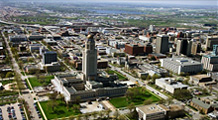Las Vegas always wins the title for worst foreclosure rate in the country. But these 5 cities have the fastest-growing foreclosure rates. And they’re not the usual suspects.After losing their homes, these 4 families thought they’d never recover. They’ve found it difficult to rent and their credit is wrecked, but life is looking up.Mortgage Rates
30 yr fixed mtg 5.02% 15 yr fixed mtg 4.55% 30 yr fixed jumbo mtg 5.89% 5/1 ARM 4.18% 5/1 jumbo ARM 4.74% NEW YORK (CNNMoney.com) — In a sign that more foreclosures could be on the horizon, 23% of people with mortgages owe more than their home is worth, according to a report released Tuesday.
Almost 10.7 million U.S. mortgages were “underwater” as of September, said research firm First American CoreLogic.
Another 2.3 million homeowners are within 5% of negative territory, the report said. The two figures combined comprise almost 28% of all residential properties with mortgages.
Negative equity, also called an “underwater” or “upside down” mortgage, has become more common as home values plummet. The report is closely watched because borrowers who are underwater are more likely to be foreclosed.
Foreclosures have been rampant for some time, but lately the tide of decay had seemed to be slowing — so Tuesday’s report could dent optimism for the housing market over the next few months.
On the other hand, the trend that turned so many mortgages upside-down — falling home prices — has reversed the past six months. The S&P/Case-Shiller HomePrice Index has reported two consecutive quarters of increasing prices.
If home prices continue to go up or, at least stabilize, fewer mortgage borrowers will find themselves underwater in the coming months.
CoreLogic changed its methodology for the third quarter — now it accounts for payments that reduce principal, and it no longer assumes home equity credit lines have been maxed out. Using the old method, 33.8% of borrowers would have been underwater in the third quarter compared with 32.2% in the previous quarter, according to a CoreLogic spokeswoman.
State totals: The majority of underwater mortgages are heavily concentrated in five states that have particularly suffered from the housing bust: Nevada, at 65%; Arizona, at 48%; Florida, at 45%; Michigan, at 37%; and California, at 35%.
These five states have been especially beleaguered because of a high rate of prime loans that went bad. Many of those loans were option-adjustable rate mortgages, in which borrowers could choose to make minimum payments that were so low they did not even offset the interest being accumulated.
When that accumulated debt reaches a certain point — usually 10% to 25% more than the original principal — the option-ARMs loans are recast into fixed-rate mortgages. When that happens, many borrowers cannot afford the new payments.
First Published: November 24, 2009: 7:41 AM ETsubscribe to MONEY Magazine.
–>
This is a bit disturbing… but at least we know…








 Catch Our Feed
Catch Our Feed Subscribe via Email
Subscribe via Email Follow Our Tweets
Follow Our Tweets Friend Us On Facebook
Friend Us On Facebook Watch Us On Youtube
Watch Us On Youtube